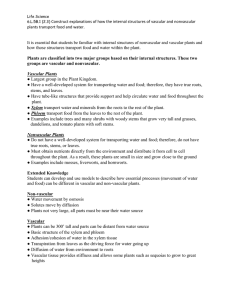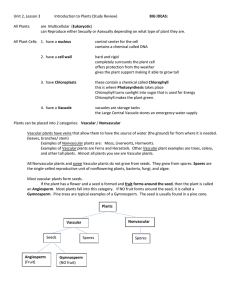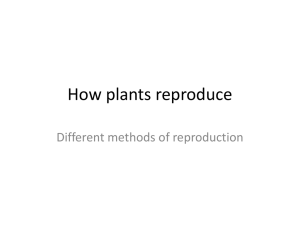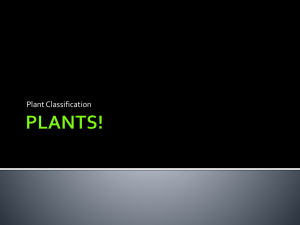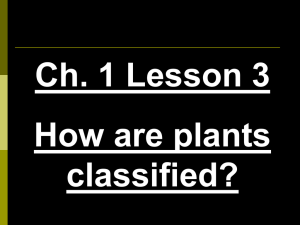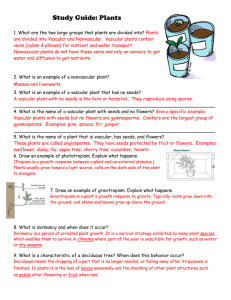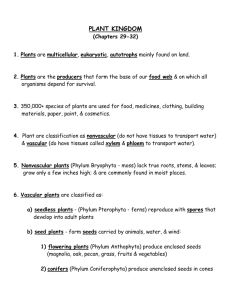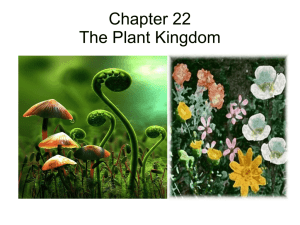Science Notes
advertisement
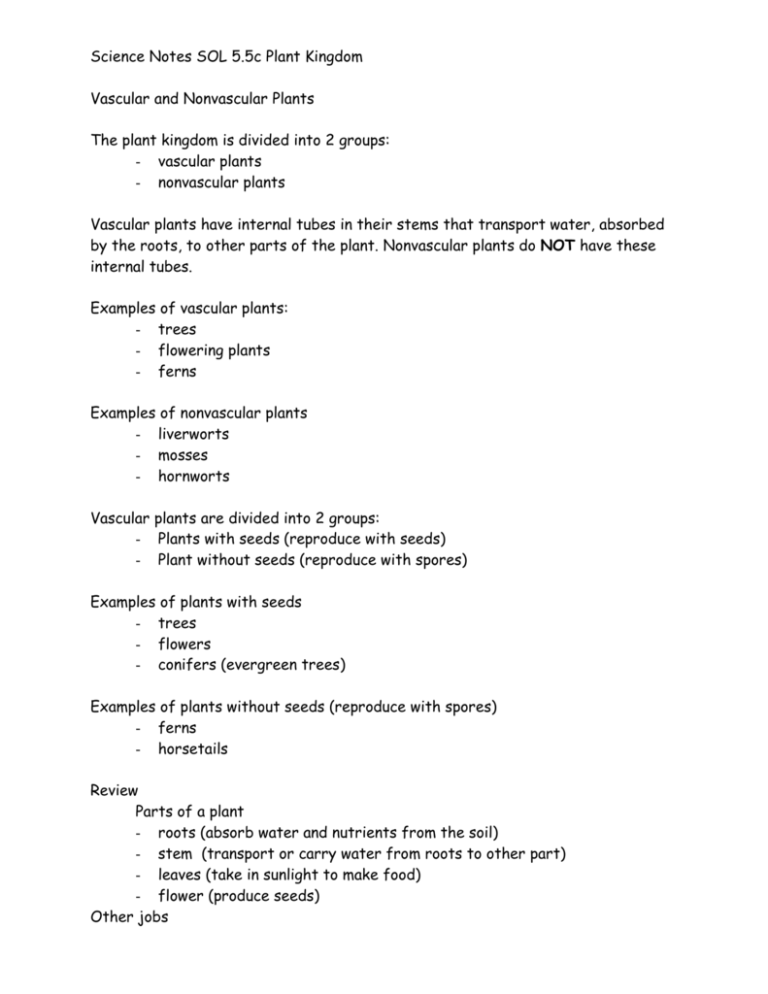
Science Notes SOL 5.5c Plant Kingdom Vascular and Nonvascular Plants The plant kingdom is divided into 2 groups: - vascular plants - nonvascular plants Vascular plants have internal tubes in their stems that transport water, absorbed by the roots, to other parts of the plant. Nonvascular plants do NOT have these internal tubes. Examples of vascular plants: - trees - flowering plants - ferns Examples of nonvascular plants - liverworts - mosses - hornworts Vascular plants are divided into 2 groups: - Plants with seeds (reproduce with seeds) - Plant without seeds (reproduce with spores) Examples of plants with seeds - trees - flowers - conifers (evergreen trees) Examples of plants without seeds (reproduce with spores) - ferns - horsetails Review Parts of a plant - roots (absorb water and nutrients from the soil) - stem (transport or carry water from roots to other part) - leaves (take in sunlight to make food) - flower (produce seeds) Other jobs Roots also help anchor or hold the plant in the ground. Roots edible for food are carrots, turnips, sweet potatoes, and radishes. The stem also provides support for the plant. Stems that are edible for food are celery, asparagus, and potatoes. Leaves also help provide protection, store extra food, capture food, and help release excess water (transpiration). The chloroplasts in leaves contain the chlorophyll which helps make food and give plant their green color. There are some leaves that are edible for animals (cabbage, lettuce, parsley, and spinach). The flower also provides beauty and attracts insects for pollination. Flowers edible for food are broccoli, cauliflower, and artichokes. Photosynthesis is the process by which plants make food for energy. The chloroplasts in the leaves capture sunlight, which is then combined with water, carbon dioxide, and chlorophyll to make food for the plant. The result is glucose, or sugar. Another by-product of photosynthesis is oxygen, which is released into the atmosphere. We benefit from the oxygen. Without plants we would not be able to survive. Transpiration is the process that releases excess water from plants. Respiration is the process that releases energy back into plants.
